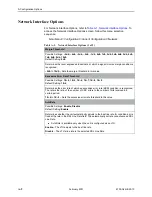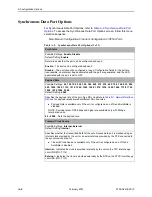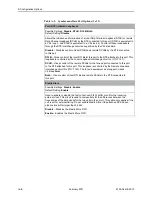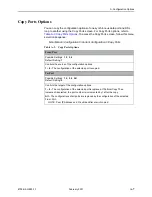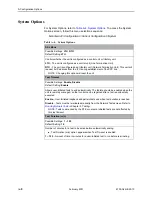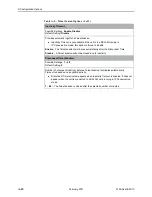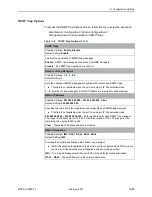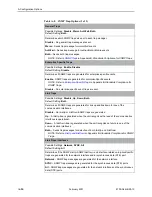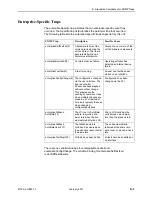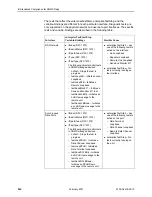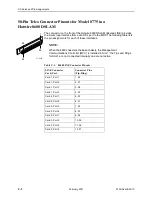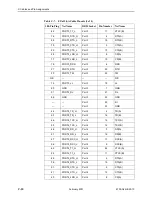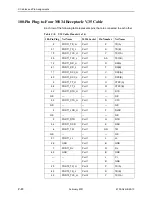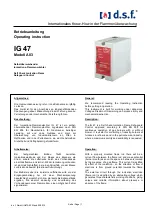
B. Standards Compliance for SNMP Traps
B-2
February 2001
8700-A2-GB25-10
linkUp and linkDown
The link SNMP traps are:
linkUp – The unit recognizes that one of the communication interfaces is
operational.
linkDown – The unit recognizes that one of the communication interfaces is
not operational.
The network and synchronous port interfaces (physical sublayer) are represented
by an entry in the MIB-II interfaces table and supported by the DS1 MIB.
The following list describes the conditions that define linkUp and linkDown.
linkUp/Down Variable-Bindings
ifIndex (RFC 1573)
This object provides the index into the ifTable and potentially into tables in other MIBs.
The values of ifIndex are the same for all models, although not all indexes are
supported for each model.
The ifIndex included with the trap consists of the slot number times 1000, plus:
– 2DSL Interface, Port 1
– 3DSL Interface, Port 2
– 4DSL Interface, Port 3
– 5DSL Interface, Port 4
– 10Synchronous Data Port, Port 1
– 11Synchronous Data Port, Port 2
– 12Synchronous Data Port, Port 3
– 13Synchronous Data Port, Port 4
ifAdminStatus (RFC 1573)
This object specifies the operational state of the interface:
– up(1)
DSL Network: DSL link is established.
Synchronous Data Port: Port is enabled and both CTS and DSR are ON.
– down(2)
DSL Network: DSL link is not established.
Synchronous Data Port: Port is disabled or CTS or DSR is OFF.
– testing(3)
A test is active on the interface.
ifOperStatus (RFC 1573)
This object contains the same value as ifAdminStatus.
i
fType (RFC 1573)
This object is the type of interface:
– propPointToPointSerial(22)
Used for the synchronous data ports and EOC.
– sdsl(96)
Used for the DSL network interface.

